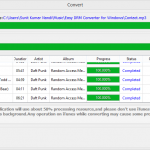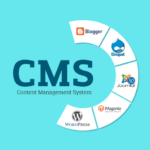Understanding the Phases of the Software Development Life Cycle
Research suggests that the global digital population stands at a staggering 4.66 billion internet users. This current digital era observes new software introduced almost every day to solve real-life problems. These innovations in technology have made life easier for tech users.
Developers and organizations are often feeling uncertain while developing a new product. This scenario is evident for beginner developers in the industry as well. It is a complicated task to create something unique which will help customers yet stand apart in a competitive IT world.
Luckily, the software development life cycle follows defined stages to build a successful project. An experienced software development company follows the cycle to deliver high-quality applications.
What Is SDLC
Software development life cycle, commonly known as SDLC, is a framework. Developers and organizations widely use this process or methodology. It helps effectively build premium products while also meeting the client’s needs.
SDLC offers various phases for optimizing the development process. It also adds significance to your business. The frameworks provide tasks associated with each step to create a product.
The process helps in structuring the applications or product in a systematic and disciplined manner. Various people in the organizations make use of SDLC, including cross-functional teams.
The main aim of this life cycle is to create a polished final result while also providing an understanding among the team members.
Each phase of SDLC has specific roles that members have to carry out during the process. They must optimize and manage to deliver the expected program systematically.
The phases of the framework include:
- Requirement gathering or analysis
- Design
- Development or coding
- Testing
- Deployment
- Maintenance
Understanding The Phases Of SDLC
As stated above, there are 6 phases or stages of the development life cycle. Each step is just as crucial as the next and focuses on specific goals.
Requirement Gathering Or Analysis
This stage of SDLC works on defining the project requirements of the product. According to Qulix developers, It is one the most critical phases which helps kick start the project.
Team members collect input from the client, market surveys and domain experts in the industry. Activities involved in the steps include creating a detailed plan and allocating resources.
The information collected determines if the software you build will be profitable and thriving in the long run.
After collecting all the requirements, a feasibility study analyses the plan. It takes into account factors such as economic, technical, legal and operational approaches. This analysis will help create a successful product without taking risks.
Design
Developers refer to requirement documents to design the appropriate architecture of the software. The stakeholders or clients also review the design.
The final design selection depends on parameters such as modularity, budget, time constraints, and risk. In this step, the use of design document specification (DDS) helps suggest various design ideas.
Development
Also called the implementation stage of SDLC, it involves developing the operating system. The design selected during the previous step transforms into reality in this phase.
The DDS provides programming guidelines for the source code. Engineers follow the document given by the organization and use programming languages. The languages chosen depend on the type of operating system built.
Testing
After the completion of coding, the testing stage begins. The software goes through a testing environment where test engineers evaluate it.
Testing is essential for checking bugs, defects, and threats. It also makes sure that the product is functioning according to the requirements. The engineers track and fix the reported defects until it reaches the expected standard.
Retesting takes place to ensure that the system is free of any issues before it releases publicly.
Deployment
After testing, the deployment of the product occurs where it becomes available for use in the market. This stage of SDLC also transfers the ownership of the program to the client.
The deployment also happens in different stages. It often becomes accessible to a limited number of customer users to conduct UAT (User Acceptance Test). As the initial users provide their feedback, the team makes changes in the product for future enhancement.
Maintenance
After its release, the team maintains the product as well as updates it whenever needed. Even as the deployment step is over, the development process never stops.
It goes through continuous innovation according to the customers’ feedback and reviews. In SDLC, maintenance also involves adding a new feature, upgrading or introducing a new system version.
Conclusion
SDLC is an innovative tool, one that is highly recommended and used by several organizations. It helps build quality programs and offers a framework for guiding the developers.
Its benefits are well understood when organizations follow its models and customer requirements.
If you have a creative idea in mind but cannot proceed further, custom software development is ideal.
















